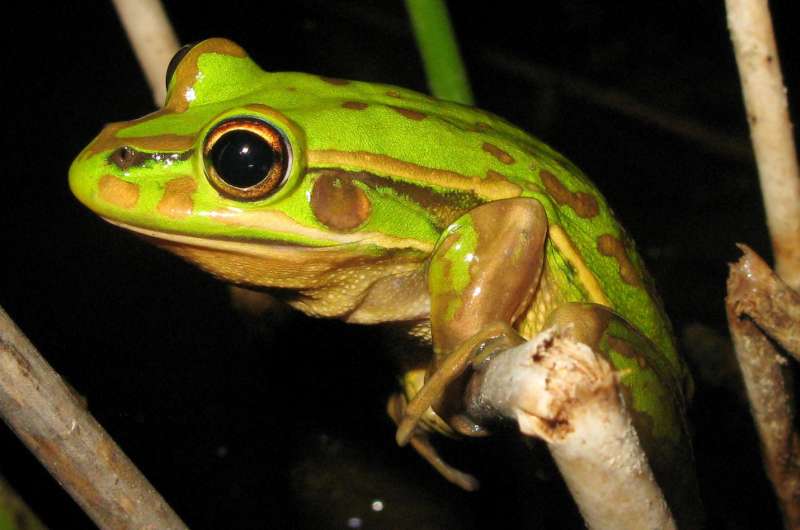Frog reproduction in created ponds may be affected by disease and food availability

Food availability and disease in created habitats may affect the reproductive output of reintroduced frogs, according to a study published July 27, 2016 in the open-access journal PLOS ONE by Kaya Klop-Toker from the University of Newcastle, Australia, and colleagues.
Attempts to mitigate the impact of land development often involve the reintroduction of species and creation of habitats. However, previous research has found that captive-bred animal populations, when released into a created environment, may not breed successfully. To investigate which factors potentially contribute to breeding failure within a created habitat, the authors of the present study monitored a released population of endangered green and golden bell frogs, Litoria aurea, within created ponds on Kooragang Island in the New South Wales region of Australia and compared them to populations in natural breeding ponds as well as natural ponds where breeding did not occur.
The authors discovered that the created habitat had lower diversity in vegetation and invertebrate species than the natural ponds, which may have resulted in fewer nutritional resources available to the frogs for breeding. Also, compared to the wild populations, a greater proportion of frogs in the created habitat were carrying the chytrid fungus, a pathogen previously shown to reduce reproductive functioning in male L. aurea.
While their study was limited to one area in Australia, the authors suggest recommendations to improve likelihood of success when reintroducing frogs into created habitats, including planting a diversity of plant species to attract invertebrates and following recommendations to reduce disease within the frog population.
More information: Klop-Toker K, Valdez J, Stockwell M, Fardell L, Clulow S, Clulow J, et al. (2016) We Made Your Bed, Why Won't You Lie in It? Food Availability and Disease May Affect Reproductive Output of Reintroduced Frogs. PLoS ONE 11(7): e0159143.
Journal information: PLoS ONE
Provided by Public Library of Science


















